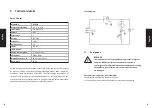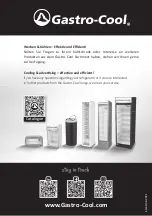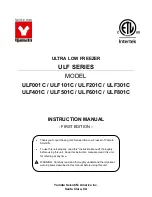
32
33
En
gli
sh
En
gli
sh
8 Operation
8.1 Switching on the appliance
In order to switch on the appliance, insert the mains plug into the socket.
8.2 Setting the temperature
The temperature can be set at from -26°C to –14°C. It is set by the knob.
+
+
––
We recommend a temperature of approx 4°C.
NOTE
Please note that the temperature will change depending on the ambient
temperature (installation site), the frequency of opening the door and the
contents.
Please note the best-before date of the products.
IMPORTANT
High room temperatures (e.g. on hot summer days) and a cold temperature
setting can lead to continuous refrigerator operation. The reason for this is
that the compressor has to run continuously in order to maintain the low
temperature in the appliance. In this case, the appliance is not able to defrost
automatically since this is only possible when the compressor is not running
(see defrosting section). Therefore, a thick layer of frost or ice may form on
the rear interior wall.
8.3 Noises during operation
Normal noises
• Humming – the noise is caused by the compressor during operation.
It is loud when it switches on or off.
• Liquid noise – caused by the refrigerant circulating in the unit.
• Clicking noises – the temperature regulator switches the compressor
on or off.
9 Defrosting/switching off
During the cooling and defrosting phases, a thin layer of ice or drops of water
form on the inner wall. The condensation water flows into a collecting tray
and evaporates. Please ensure that the drain is not blocked. It can be cleaned
carefully with a pipe cleaner or a small brush.
Your refrigerator is capable of defrosting automatically, but if a thicker layer
of ice forms in-side the appliance, you should occasionally defrost it by hand,
proceeding as described under 10.1. Optionally, to accelerate defrosting, you
can place a bowl with hot water inside the appliance or use a hairdryer.





































